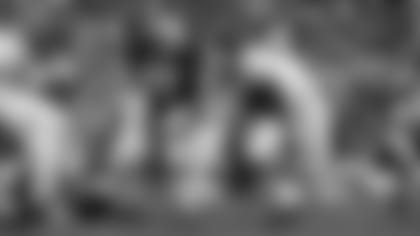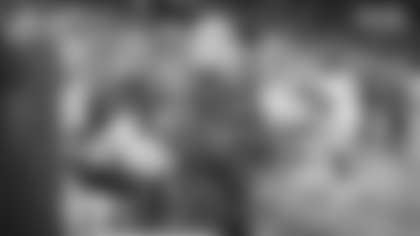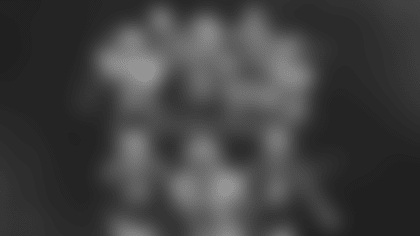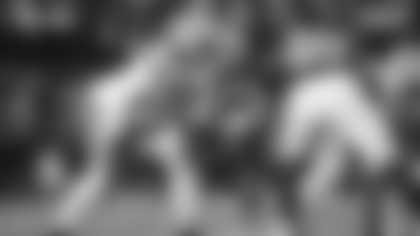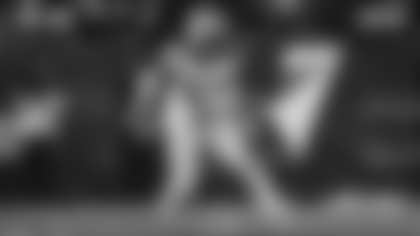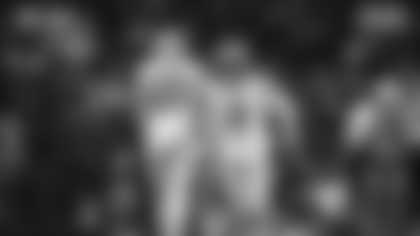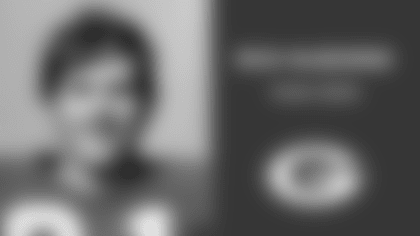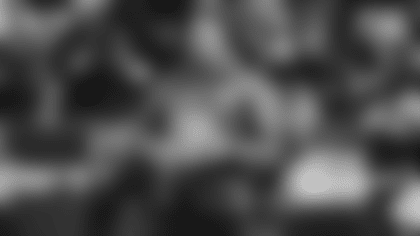With the Packers-Bears Thanksgiving game a week off, we'll stick to that subject.
Ron from Broken Arrow, OK
As I recall, when the two Packers-Bears games were wiped out by the 1982 strike, the NFL picked and chose the opponents for the last week of the revised schedule. Why in the world did the NFL not have the Packers play the Bears?
When I asked team president Robert Parins that question, back in 1982, he told me there was talk early in the strike of rescheduling a Packers-Bears game. Your recollection is spot on. Once the strike was settled, the NFL followed its original schedule for games played from Nov. 21 through Dec. 27. Week 9, played Jan. 2-3, essentially filled the postseason bye week, and the NFL picked what it thought would be the most attractive matchups. Prior to the strike, the Packers and Lions were both 2-0. The Bears started 0-2. After 57 days and eight lost weekends of games, the league was clearly worried about attendance and television ratings. In other words, dollar signs won out over tradition.
James from Appleton, WI
Which is the oldest rivalry? Chicago Cardinals vs. Decatur Staleys (now Bears), dating to Nov. 28, 1920; Cardinals vs. Packers, Nov. 20, 1921; or Packers vs. Chicago Staleys (now Bears), Nov. 27, 1921?
Good question. Bears-Cardinals was a fierce rivalry at one time. They met every year but once from 1920 until the Cardinals moved to St. Louis in 1960 and played in the same division from 1933-49. The Packers and Cardinals met every year from 1921-49 except for 1923 and 1944 and also were in the same division for 16 years. So there's some history there, too. Here's what my dictionary tells me is the definition of rivalry: "Competition for the same objective or for superiority in the same field." So if you go by the dictionary, even though the Cardinals have moved twice, and the Bears and Cardinals have played only 20 times in the last 50 years, they're still rivals. Ditto for the Packers and Cardinals, although they've met only 17 times in the last 50 years. That's why, for the sake of accuracy, I refer to Packers-Bears as pro football's most storied rivalry. I don't see how anyone could argue that point. But, in my little world, I no longer consider Bears-Cardinals or Packers-Cardinals to be rivalries.
Mark from Parks, AZ
On Thanksgiving, the Packers have a chance to tie the win/loss record against the Bears in their long rivalry. When was the last time the Packers were ahead on wins?
Fritz from York, Maine, and John from Orlando, Fla., asked the same question. As of today, the Bears lead the regular-season series, 92-91-6. The teams have split two postseason games. The last time the Packers led the series was at the end of the 1932 season. They were up, 11-10-4, but lost three games in 1933 and haven't led since. But here's a puzzling footnote. On Sept. 21, 1924, the Packers beat the Bears, 5-0, in Green Bay. Through 1974, the Official NFL Record Manual counted it as a regular-season game. Then 50 years after the fact, it was decided it was a non-league game and it hasn't been counted since. Otherwise, the series would already be tied and the Packers would be in position to take the lead on Thanksgiving.
Todd from Havre, MT
Next week, the Packers will retire Brett Favre's number, a significant moment in Packers history by any definition. However, isn't there another historical significance to a Packers-Bears game on Thanksgiving? If I recall correctly, the last time the Packers were to host the Bears on Thanksgiving was 1921. And despite having signed a contract to play in Green Bay didn't Bears coach and owner George Halas fail to honor that contract?
Not true. In 1921, the Packers' first season in what is now the NFL, many of the games were scheduled week to week. Plus, the Packers, presumably for financial reasons, planned to only schedule home games. Thus, they played four non-league games and their first four league games at Hagemeister Park. But everything changed after they beat Hammond on Nov. 13 before another small and disappointing crowd. "Once more the management lost money and it is probable that for the remainder of the season, the Packers will have to travel abroad due to the lack of support at home," George Whitney Calhoun wrote in the Green Bay Press-Gazette the next day. Inserted at the top of his story was a short news flash that the Packers had scheduled a game for the following Sunday against the Cardinals in Chicago. On Nov. 20, the Packers tied the Cardinals, 3-3, before a small crowd on a muddy field, but the score caught the attention of others in the loosely organized league. Little Green Bay had nearly beaten – the Cardinals tied the game with four minutes to go – the longest established football team in Chicago. It also turned out to be a good payday for the Packers when Cardinals owner Chris O'Brien ponied up the visiting team guarantee, $1,200, albeit after a nervous wait. Forty years later, Calhoun wrote, "(O'Brien) said to me rather brusquely, 'we never pay off here at the park and I always pay off in cash. Walk down to the poolroom two blocks down on the left hand side of the street and I'll be there in a few minutes.' We went to the poolroom and finally Chris came in. He pulled out a bunch of bills – none of them were big bills – and we got our money and out the door we went." That same day, the Bears beat the Cleveland Tigers at what is now Wrigley Field and drew an estimated 10,000 fans, a huge crowd at the time. While the Bears had a game already scheduled for Thanksgiving (Nov. 24) against the Buffalo All-Americans, Halas was impressed enough by the Packers' showing against the Cardinals that late on Tuesday afternoon, Nov. 22, he agreed to play them in Chicago the following Sunday. In a letter to Packers management that accompanied the signed contract, Halas wrote, "We realize that we are biting off quite a chunk in playing the Packers two days after our game with the All-Americans, but the Green Bay team has made such a record on the gridiron this fall that we were forced to meet them before laying claim to the professional championship of the country." The Packers lost, 20-0, but the game drew 7,000 fans and a rivalry was born. The next year, the Packers were deep in debt and tried in early November to lure the Bears to Green Bay for a Thanksgiving game. However, those efforts "fell flat," according to the Press-Gazette. "The Chicago team is packing 'em in at Cub park and Manager Halas wasn't any too anxious to leave his 'gold mine' and come hither," the paper explained. "The Bear manager played it safe by asking $4,000 to bring his team here, knowing that no club in the pro circuit would attempt to meet such a high guarantee." So there was no Packers-Bears game in 1922.
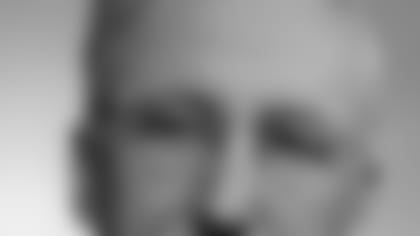
Tom from Shawano, WI
I want to thank you for being instrumental in my grandfather, Frank Jonet, being inducted into the Packers Hall of Fame. It was one of the proudest moments of my life. My dad told me on several occasions that Halas contacted my grandfather to help negotiate the deal that would have the Packers play games in Milwaukee, knowing they were important to the league and couldn't survive just playing in Green Bay. Please shed some light on this.
Let me say first, when your grandfather was inducted into the Hall of Fame in 2011, it was long overdue. I tell people, and I don't believe this is an exaggeration, the Packers were perpetually on their deathbed from the day they entered the league in 1921 until the stadium referendum that resulted in Lambeau Field was passed in 1956. And Frank Jonet played a vital role in ensuring their survival. I can't verify whether those discussions with Halas took place, but, if your father told you that, I'd be inclined to believe him. Certainly the franchise was in trouble when the Packers played their first home game in Milwaukee in 1933. That was the year they went into receivership and your grandfather was appointed receiver. There also was discussion among league owners during that period about turning the Packers into a traveling team. So it's very possible Halas encouraged the Packers to play more games in Milwaukee and did so with good intentions. After all, the Packers were his biggest draw. But I also suspect Halas had an ulterior motive. From books I've read, including "Paper Bear" by Jeff Davis, I've gotten the impression Halas was forever concerned about the Cardinals infringing on his territory. My hunch is he suspected his crosstown rival had its eyes on Milwaukee as a second or alternative home. But based on league minutes, it was Lee Joannes, president of the Packers from 1930-47, who pressed the issue and convinced the other owners at a 1938 league meeting to extend Green Bay's territorial rights to Milwaukee.
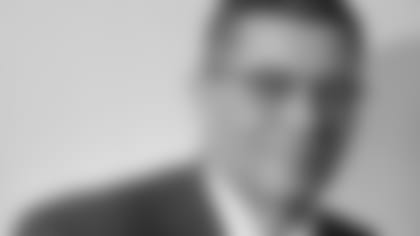
Rick from Crown Point, IN
I had lunch with 86-year old Gene Schroeder, who played for the Bears in the 1950s. He told me Packers president Dominic Olejniczak asked Halas for a coaching recommendation in 1959 and Halas told him, "There's only one choice. Vince Lombardi." True?
There's probably some truth to it. Internally, I believe Jack Vainisi, the Packers' talent scout, had a lot to do with hiring Lombardi. From the outside, I think Commissioner Bert Bell might have had the most influence on Olejniczak and others. When I hear the story about Halas recommending Lombardi, the first person I think of is Gene Ronzani. Halas recommended him, too, but no doubt never bragged about it afterward. One of Halas' former assistants and players, Ronzani did a dismal job of coaching the Packers from 1950-53. That said, I believe Halas and Cleveland coach Paul Brown both endorsed Lombardi in talks with the Packers. (Lombardi photo by AP)
Andrew from Jacksonville, FL
Mike Ditka has stated that he thinks Forrest Gregg directed Charles Martin to body-slam Jim McMahon during the game in 1986. Any truth to that?

I don't believe "directed" would be the right word. But Gregg always had his undermanned Packers worked into a state of hysteria for the Bears and especially that year. Before the first game, safety Ken Stills said the Packers intended to go after McMahon, who was listed as doubtful with a slight shoulder separation, and try to reinjure him. "I think if we get the opportunity… we're going to pick him up and we're going to put him on his shoulder," Stills told the Milwaukee Sentinel, much to Gregg's displeasure or so he has said. McMahon sat out that game, but not the next. Some of the Packers defenders went into the second game wearing white towels on their belts with Bear numbers written on them. The Bears called it a hit list. Martin wore 9, McMahon's number, and did exactly what Stills said they planned to do in the first game, although more blatantly I think than anyone imagined. Michael from Hartland, Wis., asked if I thought the Packers were getting even for the Bears body-slamming St. Louis Cardinals quarterback Neil Lomax in the preseason. I would think not. I think the Martin incident was fueled by the bitter intensity of the rivalry during the Ditka-Gregg years and Martin's unbalanced personality. (Charles Martin photo by Vernon Biever)
Scott from Greensburg, IN
I've heard that in 1985 when Mark Lee was penalized and ejected for hitting Walter Payton out of bounds, replays showed Payton had his hand inside Lee's facemask and was trying to pull him over the bench to make it look like a vicious hit. True?
Yes, it appeared on television replays that Payton grabbed Lee's facemask and pulled him. I can't say Payton did it intentionally.
Wayne from Milwaukee, WI
I attended a Packers-Bears game in the late 1930s or early '40s at a field with a snow fence, a red track around it and wooden bleachers. I remember a lot of fists flying, Don Hutson scoring and the Packers winning. What field and year would it have been? At the time, I lived in Sturgeon Bay.
The site would have been old City Stadium, which was located behind Green Bay East High School. The Packers played there from 1925-56. A white fence with a single railing circled the grass part of the field and outside of that was a cinder track. I can't tell you the year for sure, but my guess would be 1944. If the Packers won and Hutson scored a touchdown, it would have to be either '44 or 1935. In '35, Hutson caught an 83-yard TD pass on the first offensive play, and the Packers won, 7-0. In '44, the Packers won, 42-28, and Hutson caught a 26-yard TD pass. There were no big brawls in either game, but skirmishes were common back then when the Packers and Bears played.
Jim from Madison, WI
I'm under the belief the Bears owner gave the Packers money to keep them afloat in the early years of the NFL. True?
Actually, in 1932, it was Lee Joannes, president of the Packers, who accepted an IOU from Halas for $1,500 when he couldn't pay the guarantee after a game in Chicago, not the other way around. Halas wasn't that wealthy, and he was too cheap. He was a good friend to the Packers, but usually when it was in his financial interests, too. Halas moved the Decatur Staleys to Chicago at the suggestion of A.E. Staley, his boss. Staley told him the future of pro football lied in the big cities. So in the beginning, Halas wasn't any too eager to play Green Bay. He was no villain, as he has been portrayed. The story that he got the Packers booted out of the league following the 1921 season for using University of Notre Dame players against his Bears is untrue. There's a paper trail of primary sources that runs from Racine, the Packers' actual opponent, to South Bend, Ind., to Chicago to prove it. Yet Halas wasn't always a faithful friend to the Packers, either. He helped save them in the 1920s by agreeing to play them three times a year, including twice in Chicago. Those were big gates for the Packers, but they also were Halas' best drawing card. Then as the Packers struggled financially in the 1930s and on the field in the late 1940s, Halas' support seemed to waver. Curly Lambeau confirmed reports in 1949 that Halas wanted the Packers to move their home game against the Bears from Green Bay to Milwaukee. A year later, after the NFL absorbed three teams from the All-America Football Conference, it had to realign. Seemingly unsure of where Halas stood on the issue, the Packers feared they'd be placed in a different division than the Bears. At that point, prior to television, the gate for the two Packers-Bears games was Green Bay's lifeblood. In 1951, realignment came up again. This time, league minutes reveal Halas favored moving to what had been the Eastern Division, at least on a rotating basis. Again, his alleged motive was money. It was reported in the Press-Gazette that he wanted to avoid costly trips to the West Coast and to rejoin the Cardinals in the same division. Again, the Packers-Bears rivalry appeared in jeopardy. But then on March 31, 1956, three days before a citywide referendum, Halas made a special trip to Green Bay where he spoke at a stadium rally and basically told those in attendance to vote yes or face losing their team. That's largely why he's remembered as a great friend of the Packers and for good reason.

Mark from Overland Park, KS
A client told me his father, Jim Dooley, followed Halas as coach of the Bears. I read that in 1967 while he was defensive coordinator, Dooley devised a third-down defense known as the "Dooley Shift," which we now know as the nickel defense. It would be interesting to know what defenses he would have devised for the Packers sweep and Lombardi's other plays?
Dooley was head coach of the Bears from 1968-71 and compiled a 20-36 record. Before that he was an assistant coach from 1963-67. And before that he was an offensive end or receiver for the Bears for nine years. Despite his record, Dooley was thought to have a good football mind. But I'm not willing to give him credit for concocting the nickel defense. You run risks when you credit any coach with inventing anything. I've read where there were teams using the nickel on rare occasion in the 1950s. George Allen, who was defensive coordinator of the Bears before Dooley, usually gets credit for being the first to use the nickel regularly. But the truth is Allen and Dooley both learned at the knee of Clark Shaughnessy. A mad scientist, Shaughnessy was perhaps the most innovative coach in football history. But that's another story, including Shaughnessy's brief stay in Green Bay. (Dooley photo by AP)
For more of Cliff Christl's historical perspectives, click here.



